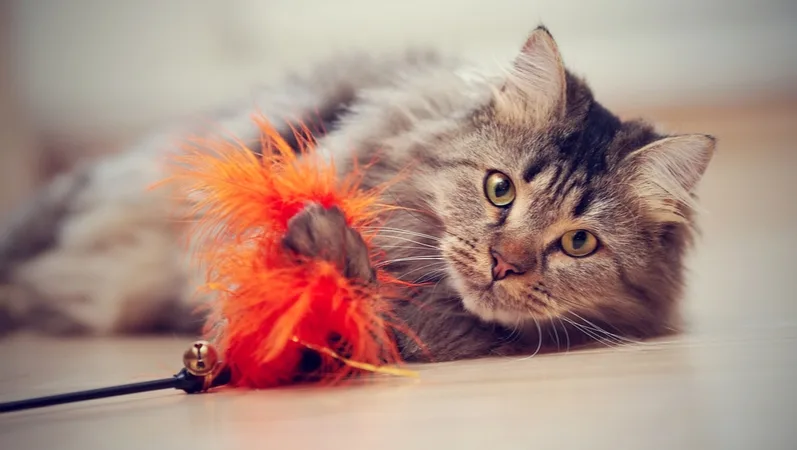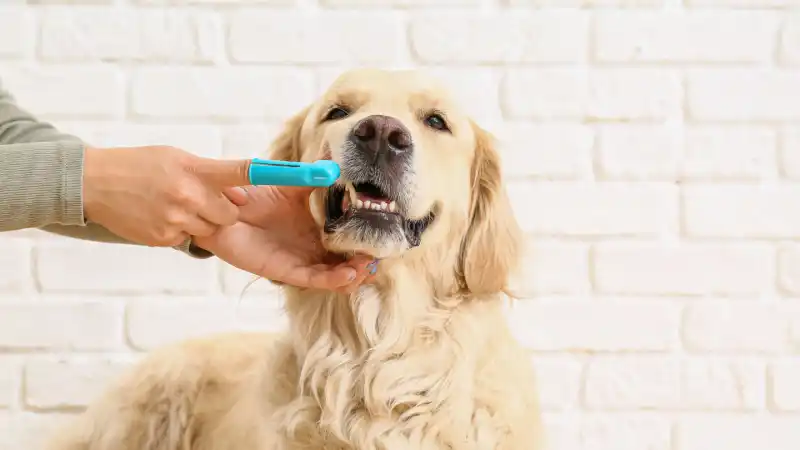Diabetes in Cats: Prevention and Long-Term Care
Diabetes is a common disease for senior cats. Here are the causes of diabetes, ways to manage the disease, and preventive measures for all types of felines.

Did you know that cats can get diabetes just like people? Yes, in veterinary medicine, feline diabetes is one of the most common diseases we encounter in aging pets. Diabetes involves high blood sugar levels, which can cause a variety of problems for cats. If left untreated, it can even lead to death.
Fortunately, cats typically exhibit signs that indicate the development of diabetes, many of which can be recognized by a cat owner and shared with a veterinarian. The good news is that there are strategies and treatments that can control the elevated blood sugar levels and, in cases where obesity is involved, reverse the diabetes.
What Causes Feline Diabetes?
Feline diabetes occurs when either the pancreas stops producing insulin (type 1) or the body’s cells do not respond to insulin (type 2). Insulin is a hormone that allows blood sugar to enter a cell so that it can be used as energy or food for the cell. In either type of diabetes, blood sugar levels will rise, causing cats to drink more water and urinate more frequently, often outside of the litter box. Cats may also excessively eat due to hunger, since the sugar can’t be used for energy. Despite eating more, these cats will lose weight. If left untreated, symptoms will continue to get worse, leading to lethargy, vomiting, dehydration, and severe weight loss.
If you notice that you need to fill the water bowl more frequently, the litter box has more urine than usual, or your cat is urinating outside the box, it is time to schedule a visit with your veterinarian. They will carefully review the symptoms, administer an examination, and recommend blood work and a urinalysis. Cats with diabetes will have elevated blood sugar levels (also known as blood glucose levels), as well as glucose in their urine. Since there are other diseases that share the same signs and symptoms as feline diabetes, lab work is the only way to make the diagnosis.
Most Common Type of Diabetes in Cats
The most common type of diabetes in cats is type 2, and affected cats are typically overweight. Therefore, the treatment plan will include weight loss, as well as medication to help reduce blood glucose quickly and effectively. Insulin injections are often necessary to get the blood glucose levels under control. Your veterinarian will discuss which insulin type is best for your cat, as well as teach you how to administer injections. Click here for information on one example of an insulin from Boehringer Ingelheim (PROZINC), and how to give your cat insulin injections.
Your vet will also help you create a weight loss plan for your cat if needed, including diet and exercise recommendations. Most veterinarians recommend a high-protein, low-carbohydrate canned or moist food diet. There are numerous prescription and over-the-counter options to satisfy even the pickiest palate.
Successful Management of Feline Diabetes
The good news is that with proper treatment, weight loss, and an appropriate diet, cats may go into remission and no longer need insulin injections. The best chance at reaching this outcome is to follow your veterinarian’s treatment plan and monitor blood glucose levels (or BG).
There are many ways to monitor BG, either through your veterinarian or at home. In fact, monitoring at home is the preferred method, as BG results are more accurate when done during your cat’s normal daily routine and without the stress of an extended veterinary visit. The AlphaTRAK 2 from Zoetis Animal Health is one example of an at-home glucometer for cats. Here’s a video on how to obtain a BG sample using this device.
Most pet owners can get samples at home, but don’t worry if you struggle to successfully get a sample, since there are other options. Be sure to stay in contact with your veterinary team to find the most effective monitoring method for you and your cat.
The keys to successful management of feline diabetes are:
1. Lowering and controlling BG
2. An appropriate diet, including weight loss for overweight cats
3. BG monitoring
Success also hinges on honest communication with your veterinarian regarding BG results and assessment of symptoms at home (such as excessive drinking, urination, and changes in appetite). Your feedback helps the veterinarian find the most effective insulin dosage and modify your cat’s plan for the best long-term outcome.
Diabetes Prevention
Taking preventive measures helps reduce the chances of your cat developing feline diabetes. The most important factor is making sure that your cat is not overweight, which can be done by feeding an appropriate amount of food each day and encouraging exercise or play. Additional steps you can take include completing annual exams for adult cats, bi-annual exams for senior patients, and regular wellness lab work to help with early disease detection and prevention.
Obtaining a pet insurance plan that includes hereditary coverage, annual wellness exams, and lab work helps to offset the cost. If your cat develops diabetes, many insurance plans help cover diagnosis, treatment, and emergencies like hypoglycemia and diabetic ketoacidosis.
The Hereditary Coverage add-on from AKC Pet Insurance (underwritten by Independence American Insurance Company) offers reimbursement for treatment related to diabetes and many other congenital conditions. Click here to get a quote today!
Dr. Preston Turano graduated from the University of Illinois College of Veterinary Medicine in 2002. Since that time, he has been a Veterinarian, Medical Director, and Practice Owner.
READ MORE ARTICLES

